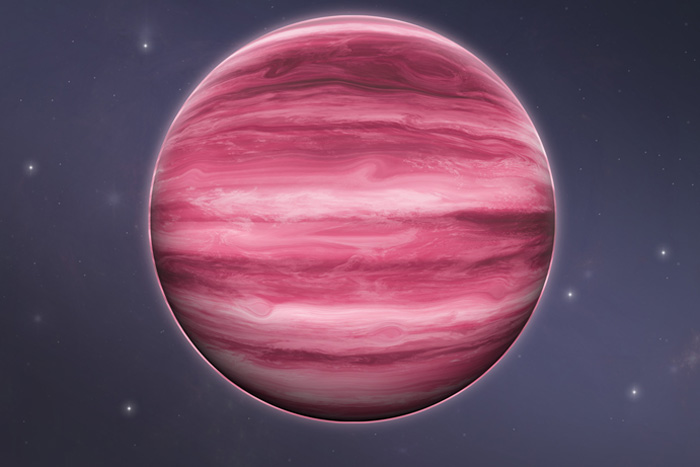
Someplace Like Home? Hunting for Life-Supporting Worlds

Kelen Tuttle, writer and editor for the Kavli Foundation, contributed this article to Space.com's Expert Voices: Op-Ed & Insights.
A little more than 7 light-years from Earth, a planet-like star hosts tumultuous clouds in its atmosphere, clouds that seem to be made of water. The star, spotted by a team of astronomers led by Kevin Luhman from Pennsylvania State University, was found using images from NASA's WISE infrared space telescope and the 6.5-meter Magellan Baade Telescope in Chile. Called WISE J0855-0714, the star is about the size of Jupiter, and between three and 10 times as massive.
Of the five things thought necessary for life as we know it — water, sunlight, oxygen, nitrogen, midrange temperatures and a lack of radiation — water may turn out be one of the most difficult to find. According to everything scientists know about the universe, thousands of Earth-like, habitable planets should exist in other solar systems. With scientists' ability to detect far-away planets getting better by the year, humanity is on the verge of determining which of these "exoplanets" could potentially harbor life. [NASA Exoplanet Mission to Hunt Down Earth-sized World]
Just last month, a stronomers for the first time detected water vapor in the atmosphere of a Neptune-size planet. Although this planet lacks a rocky surface and orbits so close to its sun that the temperatures reach more than 10,000 degrees Fahrenheit (more than 5,500 degrees Celsius), its discovery demonstrates astronomers' ability to detect water vapor on distant planets. The next step is to find water on a rocky, temperate world.
In a previous Kavli conversation, three planet hunters discussed the recent exoplanet discovery boom, with more than 700 new planets discovered so far this year; considered what state-of-the-art telescopes can — and can't — tell scientists about exoplanets; and pondered the likelihood of finding evidence of life on another planet.
On Oct. 15, from 3 p.m. to 3:30 p.m. EDT, the planet hunters will discuss the most recent exoplanet discoveries, contemplate what scientists can tell about faraway planets that might make them capable of supporting life, describe the next generation of telescopes and answer your questions about what is known about worlds beyond Earth's solar system.

The conversation, hosted by The Kavli Foundation, will be broadcast live on Google Plus. Questions can be submitted before, and during, the webcast by emailing info@kavlifoundation.org or using the hashtag #KavliLive on Google+ or Twitter.
Get the Space.com Newsletter
Breaking space news, the latest updates on rocket launches, skywatching events and more!
The hangout will feature:
- Zachory Berta-Thompson, the Torres Fellow for Exoplanetary Research at the MIT Kavli Institute for Astrophysics and Space Research. Berta-Thompson hunts for exoplanets as a member of the MEarth Project, a survey to find small planets orbiting the closest, smallest stars.
- Bruce Macintosh, the principal investigator for the Gemini Planet Imager, which recently produced the best-ever direct photo of a planet outside the solar system. Macintosh is also a professor of physics at Stanford University and a member of the Kavli Institute for Particle Astrophysics and Cosmology.
- Marie-Eve Naud, a University of Montreal Ph.D. student who led analysis that recently uncovered a previously unknown planet that's one of the most unusual exoplanets found to date, possessing a mass 10 times greater than that of Jupiter and an orbit 2,000 times larger than that of Earth.
Follow all of the Expert Voices issues and debates — and become part of the discussion — on Facebook, Twitter and Google+. The views expressed are those of the author and do not necessarily reflect the views of the publisher. This version of the article was originally published on Space.com.
Join our Space Forums to keep talking space on the latest missions, night sky and more! And if you have a news tip, correction or comment, let us know at: community@space.com.
A former contributor to Space.com, Kelen is currently the Senior Director of Creative Services for GeneDx where she acts as an in-house agency dedicated to bringing the GeneDx brand to life consistently and effectively. Prior to this position she was a freelance science writer and editor after stints as the EIC of Symmetry Magazine and six years at the SLAC National Accelerator Laboratory, She obtained her MS in Science Journalism from Boston University after her undergraduate work in Physics and Astrophysics from Carleton College.
